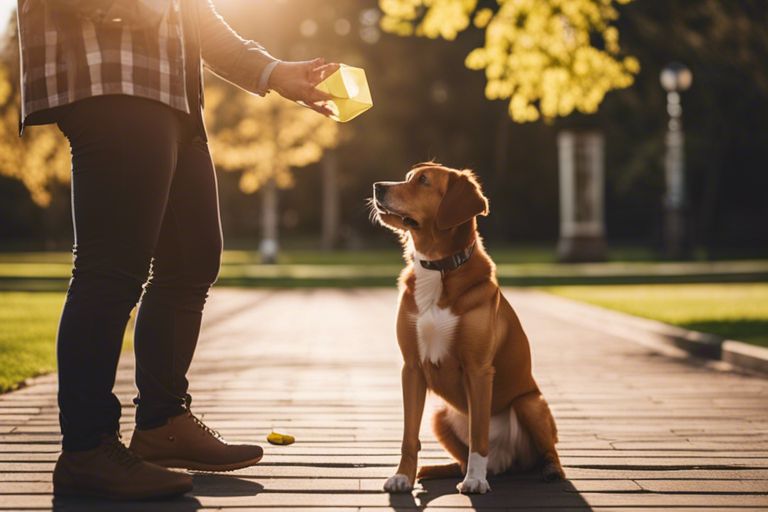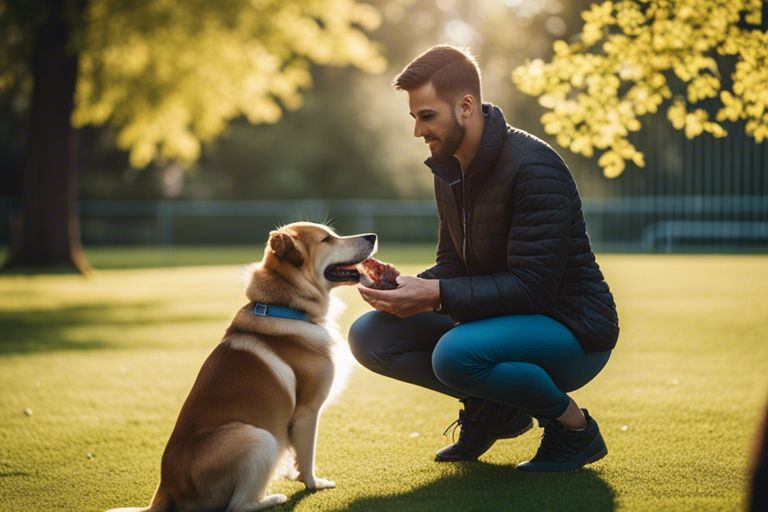Train your dog like a pro with these expert canine obedience tips and tricks that will bring out the best in your furry friend. From basic commands to advanced training techniques, this comprehensive guide will help you establish a strong bond with your dog while cultivating good behavior and manners. With patience, consistency, and the right approach, you can transform your dog into a well-behaved companion that will make you proud in any situation. Whether you’re a first-time dog owner or looking to brush up on your training skills, this blog post will equip you with the knowledge and tools you need to succeed. Get ready to take your dog training to the next level!
Key Takeaways:
- Consistency is key: Dogs thrive on routine and consistency, so it’s crucial to be consistent in your training methods, commands, and rewards.
- Positive reinforcement works best: Rewarding good behavior with praise, treats, or toys is more effective than using punishment or fear-based training techniques.
- Patience is key: Training takes time, so be patient and understanding with your dog. Remember that each dog learns at their own pace.
Preparing for Training
Factors to Consider Before Starting
An crucial step in preparing to train your dog is considering various factors that may influence the training process. Think about your dog’s age, breed, temperament, and any previous training experience. These factors can impact the approach you take and the level of patience and consistency required. The training environment, such as distractions and space, should also be taken into account. The success of your training efforts greatly depends on how well you understand these factors.
- Dog’s age, breed, and temperament
- Training environment and distractions
- Previous training experience
The key to successful training is understanding your dog’s behavior and needs. By considering these factors, you can tailor your training approach to maximize effectiveness and achieve lasting results. The more prepared you are, the smoother the training process will be. The bond between you and your furry friend will strengthen as you navigate through the training journey together.
Essential Tools for Effective Training
Preparing the right tools for your dog’s training is crucial for success. Essential tools include a collar or harness, a sturdy leash, training treats, and toys for rewards. Depending on the training methods you choose, you may also need clickers, whistles, or training mats. These tools are designed to aid in communication, motivation, and reinforcement during training sessions. This equipment sets the foundation for a structured and productive training routine.
This crucial equipment sets the stage for effective communication and positive reinforcement during training sessions. Investing in high-quality tools that are appropriate for your dog’s size and temperament will contribute to a successful training experience. With the right tools at your disposal, you can effectively guide your dog through the learning process and set them up for obedience and success.

Basic Obedience Training
How-to Establish Key Commands
The foundation of any successful obedience training program lies in establishing key commands. Consistency is key when teaching your dog commands such as sit, stay, come, and heel. Use clear, concise words and hand signals for better communication with your furry companion. Reward your dog each time they follow a command to reinforce positive behavior.
Tips for Reinforcing Good Behavior
To ensure your dog’s obedience training is effective, here are some key tips for reinforcing good behavior:
- Use positive reinforcement techniques such as treats and praise when your dog obeys a command.
- Be patient and consistent in your training approach to avoid confusing your dog.
- Set clear boundaries and rules to help your dog understand what is expected of them.
Little gestures of affection can go a long way in reinforcing good behavior. By petting your dog, giving them treats, or offering verbal praise, you can show your approval for their obedience. Recognizing your dog’s efforts will motivate them to continue behaving well.
This positive reinforcement approach is highly effective in fostering a strong bond between you and your dog. By consistently rewarding good behavior, you encourage your dog to repeat those actions. Recognizing and acknowledging your dog’s obedience will lead to a well-behaved and happy pet.
Advanced Training Techniques
Many dog owners reach a point in their training journey where basic commands just aren’t enough. To take your dog’s obedience to the next level, advanced training techniques can be extremely beneficial. These techniques require more patience and consistency but can result in a well-disciplined and responsive canine companion.
- Chaining Behaviors: This technique involves linking multiple commands in a sequence to achieve a desired outcome.
- Shaping: Shaping refers to gradually molding a behavior by rewarding small steps toward the final action.
- Proofing: This technique involves practicing commands in various environments with increasing distractions.
How-to Develop Complex Skills
Advanced training techniques are important for teaching your dog more complex skills and behaviors that go beyond basic commands. By gradually introducing these methods into your training routine, you can challenge your dog to think and respond in new ways, strengthening your bond and communication.
Tips for Troubleshooting Common Issues
With any advanced training comes the possibility of encountering common issues that can hinder your progress. These may include stubborn behavior, distractions, or difficulty understanding complex commands. To address these challenges effectively:
- Stay patient and consistent in your training approach.
- Break down complex behaviors into smaller steps for easier understanding.
For instance, if your dog is struggling to grasp a particular sequence of commands, it may be helpful to revisit the basics and reinforce fundamental skills before progressing further. This will build a strong foundation from which your dog can confidently tackle more advanced training challenges.
Maintaining Your Training Progress
How-to Keep Training Engaging
Now that you’ve put in the effort to train your furry friend, it’s crucial to keep the momentum going. Training should be a fun and engaging experience for both you and your dog. Incorporate new challenges, games, and rewards to keep your pup excited about learning and motivated to follow commands.
Tips for Ongoing Canine Education
Training is an ongoing process that requires consistency and patience. Some key tips for continuing your dog’s education include practicing commands regularly, introducing new tricks to stimulate their mind, and enrolling in advanced training classes to further develop their skills. Training sessions should be kept short and positive to prevent burnout and maintain interest. Note, a well-trained dog is a happy and well-behaved companion.
- Consistency is key in reinforcing good behavior
- Introduce new challenges to keep your dog mentally sharp
- Set aside time for regular training sessions to maintain progress
Plus, continue to reinforce positive behavior with rewards such as treats, praise, or playtime. Consistency is key in shaping your dog’s behavior, so be patient and persistent in your training efforts.
Final Words
As a reminder, training your dog like a pro requires consistency, patience, and positive reinforcement. By using these canine obedience tips and tricks, you can establish a strong bond with your furry companion while teaching them important commands and behaviors. Remember to set realistic goals, keep training sessions short and fun, and always reward good behavior. With dedication and the right approach, you can train your dog to be a well-behaved and obedient companion for life.
FAQ
Q: Why is obedience training important for a dog?
A: Obedience training is crucial for a dog’s well-being and safety. It helps establish boundaries, improves communication between you and your dog, and enhances the bond between the two of you. Additionally, a well-trained dog is less likely to engage in destructive behaviors and is more enjoyable to be around.
Q: How can I effectively train my dog to obey commands?
A: Consistency is key when training your dog. Use positive reinforcement such as treats or praise when your dog obeys a command, and redirect or ignore unwanted behaviors. Keep training sessions short and frequent, and always end on a positive note. Patience and perseverance are necessary for successful obedience training.
Q: What are some common mistakes to avoid when training a dog?
A: One common mistake is being inconsistent with commands or rules, as this can confuse your dog. Punishing your dog for not obeying a command can also be counterproductive. Additionally, avoid using training methods that involve physical or verbal abuse, as these can harm your dog both mentally and physically. Seek professional help if you are struggling with training your dog effectively.

